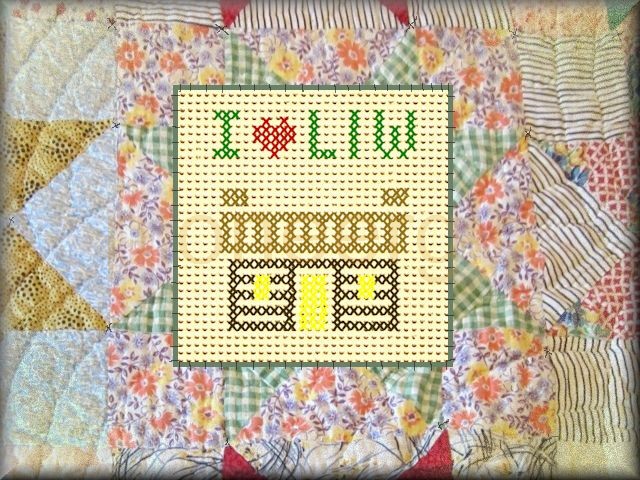perforated paper embroidery

Needlework designs in colored thread using spaced holes as sewing guide.
 There was a pasteboard box full of bright-colored yarns and another box filled with embroidery silks and sheets of perforated thin cardboard, silver-colored and gold-colored. Ma gave both boxes to Laura, saying, “You gave away the pretty things you had made. Now here are some lovely things for you to work with.” Laura was so happy that she couldn’t say a word. – The Long Winter
There was a pasteboard box full of bright-colored yarns and another box filled with embroidery silks and sheets of perforated thin cardboard, silver-colored and gold-colored. Ma gave both boxes to Laura, saying, “You gave away the pretty things you had made. Now here are some lovely things for you to work with.” Laura was so happy that she couldn’t say a word. – The Long Winter
 In an earlier chapter of The Long Winter, Laura Ingalls Wilder wrote that she had embroidered leaves and flowers onto perforated cardboard and made a picture frame, which she gave to sister Carrie for Christmas. It is not known if this embroidery was cross-stitch or something more difficult. At about the same time Laura would have been busy working on her Christmas presents, the November 1879 issue of Godey’s Lady’s Book included an intricate pattern for a picture frame on perforated cardboard.
In an earlier chapter of The Long Winter, Laura Ingalls Wilder wrote that she had embroidered leaves and flowers onto perforated cardboard and made a picture frame, which she gave to sister Carrie for Christmas. It is not known if this embroidery was cross-stitch or something more difficult. At about the same time Laura would have been busy working on her Christmas presents, the November 1879 issue of Godey’s Lady’s Book included an intricate pattern for a picture frame on perforated cardboard.
Perforated cardboard is simply a paper product with evenly-spaced holes punched or drilled through it over the entire surface of the paper. It’s available in white, cream, assorted colors, or shiny metallic finishes. You sew on it by pushing your needle and thread through the holes, being careful not to pull your stitches so tightly that they tear the paper from hole to hole. It has an advantage over projects sewn on cloth in that it can be cut into shapes without fraying (as long as you don’t cut into the row containing stitching; it’s best to cut out desired shapes prior to stitching). The major disadvantage is that the paper tears and water will ruin it, so finished pieces can never be washed. Embroidery on perforated cardboard was quite popular in the 19th century, and the craft enjoyed a revival in the late 20th century, with the materials still available today.
One of the most popular and quickly made up items it was used for in Laura’s time was bookmarks. Typically, a thin rectangle of perforated paper was decorated and then stitched to a length of ribbon. Words, initials, borders and simple mottoes were most popular. Often a first embroidery project made by young girls and given to grandmothers or favorite aunts as a gift, many of these bookmarks have survived simply because they were placed in prized books and then forgotten, perfectly preserving them to be discovered generations later.
Counted cross stitch is one of the easiest types of stitching to do on perforated cardboard. Lines and patterns are created by the repeated use of two stitches forming an X. My bookmark shown here has “I ♥ LIW” and a log cabin, and was sewn onto yellow ribbon.
While you can find instructions for cross stitch almost everywhere, note that the Woman’s Day Book of American Needlework by Rose Wilder Lane (New York: Simon and Schuster, 1963) has a whole chapter on cross stitch beginning on page 50. There are detailed instructions, sample alphabets, and intricate project patterns. Rose even mentions a project made for her mother’s Christmas present in the 1890s!
Not into sewing? You can use fine permanent markers and draw the stitches onto the perforated cardboard and then glue the piece onto a ribbon. Or try writing words and drawing pictures on any kind of paper or cardboard simply using the letter X freehand, over and over. Graph paper is useful for practice or to design your own patterns.
The antique samples of perforated paper embroidery shown below are on display in the Independence (Kansas) Historical Museum & Art Center.


perforated paper embroidery (TLW 18, 32)

